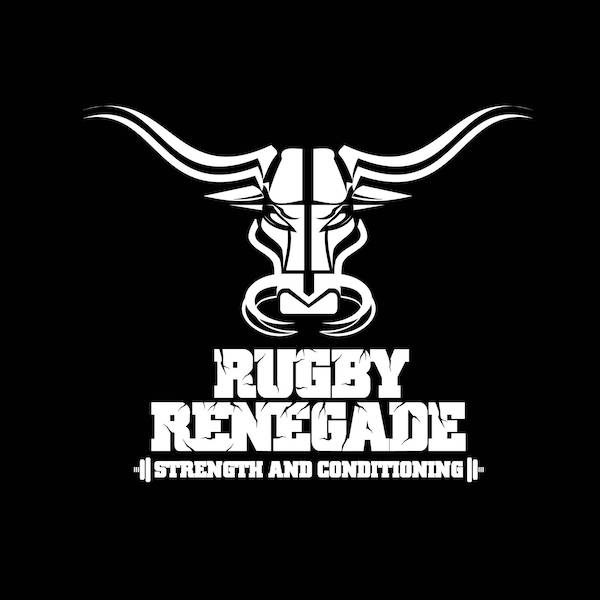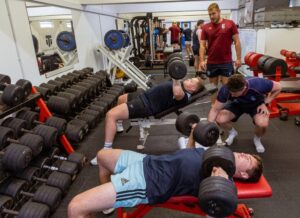When coaching our athletes gym based exercises we teach them the perfect anatomical position, think; back flat, knees not over toes, everything in line, chest up. We do it for good reason to prevent injuries and get some strong in athletic positions. But are we doing them a disservice by not putting them into alternative positions so they have to develop the strength to get out of those positions and back to “correct position”? Are we in fact putting them at greater risk of injury?
Consider a game of rugby. All the different positions you could and have found yourself in during a match, I’m betting that at least some of them weren’t the perfect athletic stance?! So it seems to make sense that at least some of the time (and obviously not all of the time!) we should expose athletes to different body positions and varied and unstable loads. Enter Imperfect Training!
The late Mel Siff author of the awesome book Super Training coined the term and probably explains it better than us!…
“…lack of safety in exercise is not simply a consequence of so-called dangerous exercises, by one of unsafe execution of any exercise. One should remember that religious avoidance of certain exercises can lead to an overall imbalance between muscle groups or in motor coordination and increase the likelihood of injury during the sports event. The avoidance of exercising a muscle group in a particular way never enhances safety; it simply weakens those muscles relative to the exercise pattern which is avoided.”
How best to use Imperfect Training
So how should you use Imperfect Training during your sessions? Firstly when wouldn’t we use it? When trying to develop strength and power these exercises limit the amount of force you can produce and for the majority of the exercises using maximal loads will sway the risk reward balance too far towards risk. If you remember that the aims of a good S&C program are to reduce injury risk and increase performance it shouldn’t be a surprise that Imperfect Training isn’t a good fit as a core of our training. So the best ways to incorporate it into a session is in warm ups and prep work and as assistance work after our core strength and power exercises.
These type of exercises are great during warm ups as they can challenge the smaller stabiliser muscles and are great for activation and they often challenge greater ranges of motion to traditional exercises. This combination of benefits make them ideal for preparing you for you traditional exercises and you should feel great by the time you come to them!
As assistance exercises you can select exercises that work on your weaknesses and/or use them to transfer your strength and power gains to more sport specific actions. For instance you could include one arm Kettlebell Clean & Presses as assistance exercise in a block proceeding returning to contact to work on bracing and locking up as well as some upper body armour building.
Examples of Imperfect Training Exercises
- Variable Loading (Bands & Chains)
- Unstable Exercises (Bands, Rings)
- Odd Objects
- Unilateral or Asymmetrically Loaded
- Strongman Exercises
- Exaggerated Range of Motion Exercises
We’ll try and give you a few examples that you can apply to your training…
Tsunami Bench Press
Great for a warm up pre bench and as an end stage rehab exercise for shoulder injuries.
Kettelbells
We love kettlebells for building strong and enduring athletes there are tons you can do with them and they are excellent for helping athletes brace and maintain good posture under an offset load.
45 Degree Lunge
The 45 Degree Lunge (2nd in video) is a great way to challenge different ranges of motion not usually trained with traditional exercises. These are a great assistance exercise on lower body days.
Slosh Pipes
We first heard about slosh pipes from Dan John and have found them a great addition for condition and speed development drills. They are also pretty easy to make! Your body has to learn to brace and react to changing demands put on it by the moving water. It’s almost the perfect form of Imperfect Training!
Band Stability Push Up
Similar to the Tsunami Bench it activates the upper body and challenges the stabilisers, not a beginner move!
Loaded Carries
These are easy to do and get the benefits of odd loading without too much risk so should be an easy addition to most peoples training.
Wrap Up
Imperfect training could help you improve you performance for rugby think about a game where you need to react to 29 other players and the ball, chances are you’ll find yourself out of the perfect anatomical position. Or worse some of the opposition are trying to push you out of that position! You need to have the ability to ride that and come out on top. Imperfect training is not your main focus of training and it’s not balancing on swiss balls but, if programmed carefully, could be an addition that will keep you injury free and dominating the opposition on the rugby field!




